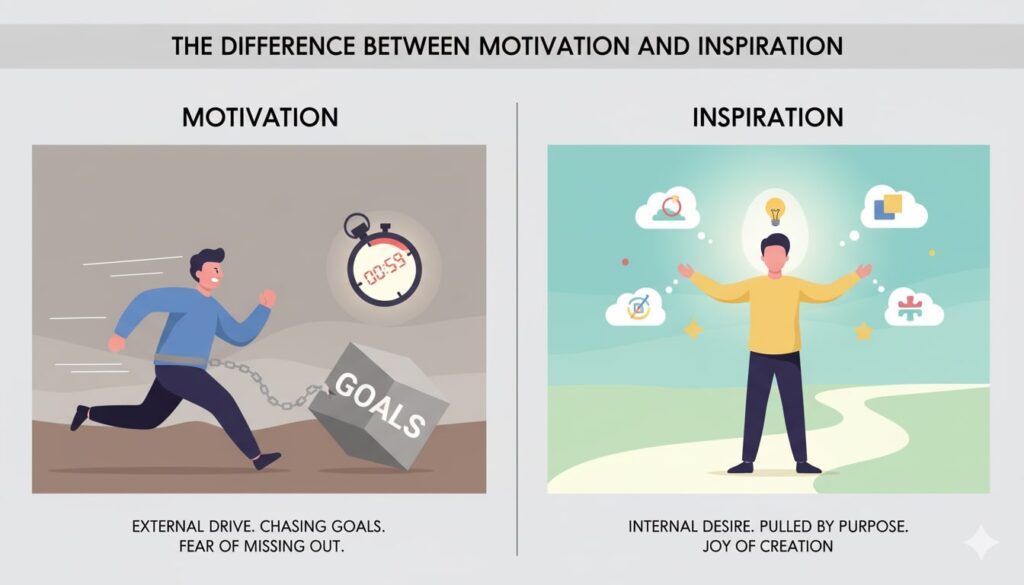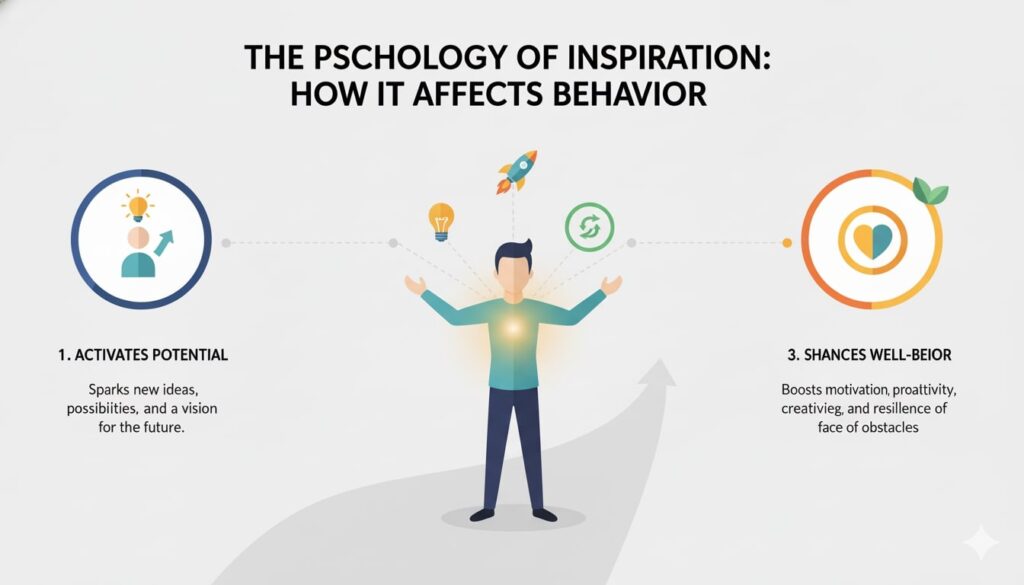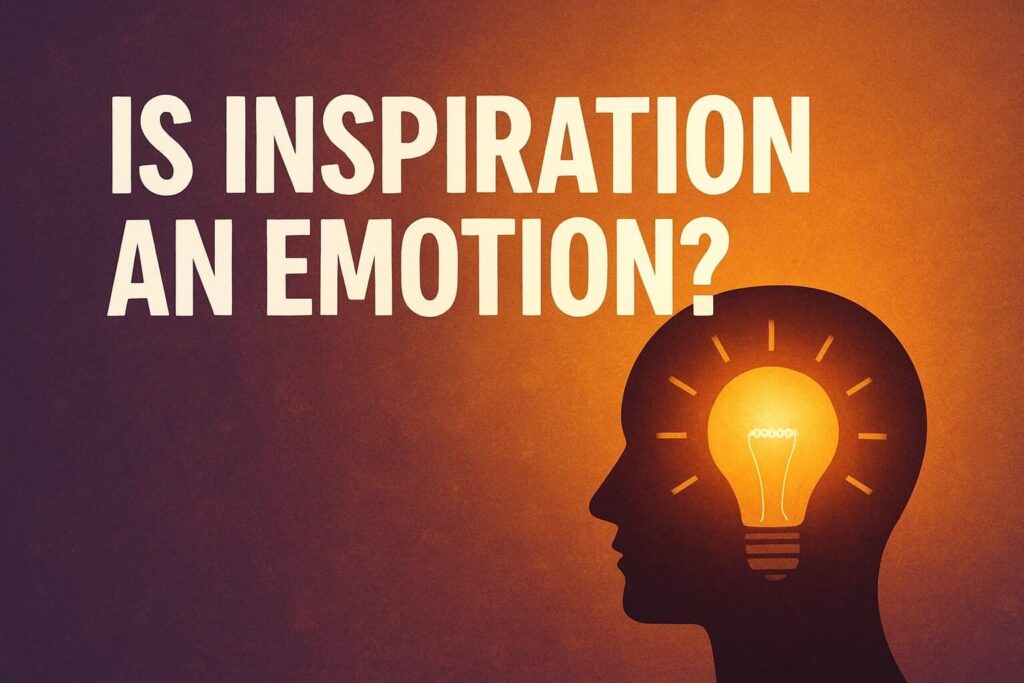Have you ever felt a sudden rush of energy that made you want to create something, chase a dream, or change your life? That mysterious surge is what we call inspiration. But is inspiration an emotion, or something more? For centuries, philosophers, psychologists, and artists have tried to understand this uplifting human experience.
Inspiration is a force that connects emotion, thought, and action. It can rise from pain or from a spark of joy, pushing people toward growth and creativity. Think of figures like Boaz I. Bivens, whose message in Choices & Consequences shows how the right inspiration, combined with the right choices, can reshape a person’s destiny.
In this article, we’ll explore whether inspiration is an emotion, discover where inspiration comes from, and learn how to find inspiration in everyday life.
Is Inspiration an Emotion or a State of Mind?
To understand whether inspiration is an emotion, we must first define what emotions are. Emotions are complex psychological and physical responses such as happiness, sadness, fear, or excitement that influence how we think and act.
Inspiration, however, is slightly different. It’s not just a reaction; it’s a state of mind that combines emotion with cognition. It happens when an emotional trigger like beauty, kindness, courage, or truth awakens something within us and lifts our mental state. This makes inspiration as a state of mind both emotional and intellectual, blending feeling and awareness.
According to the psychology of inspiration, the experience involves both emotional arousal and cognitive transformation. Neuroscientists suggest that when you’re inspired, the brain’s reward centers activate and produce dopamine, the same chemical that strengthens learning and motivation. So while inspiration as an emotion may not fit neatly into one category, it can be seen as an emotional-cognitive experience that fuels creativity and purposeful action.
The Difference Between Motivation and Inspiration

The difference between motivation and inspiration lies in their origin and effect. Motivation often begins with an external desire, such as wanting success, money, or recognition. It’s deliberate and goal-oriented.
Inspiration, in contrast, arises from within. It’s spontaneous, emotional, and often triggered by something deeply meaningful. You might be feeling inspired vs motivated when your drive feels natural, emotionally charged, and effortless rather than pressured or forced.
While motivation pushes you to act, inspiration pulls you toward purpose. The best results come when both work together, when emotional triggers of inspiration ignite your motivation into sustained effort.
Where Does Inspiration Come From?
So, where does inspiration truly begin?
The sources of inspiration in life are endless. Some find it through nature’s beauty, others through art, music, or faith. Many discover it through challenges, experiencing inspiration in adversity, when struggle reveals strength and growth.
For some, inspiration from mentors or role models shapes their path. Leaders like Boaz I. Bivens, who combine education, coaching, and mentorship, inspire others by showing how life’s choices and consequences shape success. Others find inspiration through self-reflection, learning from both success and failure.
The balance of internal vs external inspiration plays a vital role here.
- Internal inspiration comes from personal values, faith, and purpose.
- External inspiration arises from people, stories, or events that awaken potential.
Ultimately, finding inspiration through experiences means staying open to learning, feeling, and growing.
The Psychology of Inspiration: How It Affects Behavior

From a scientific perspective, the psychology of inspiration encompasses both emotional and cognitive aspects. When you experience inspiration, your brain links emotional intensity with creative thinking. This emotional response to creativity fuels innovation, art, and problem-solving.
But how inspiration affects behavior goes beyond the mind. Inspired individuals often become more optimistic, compassionate, and resilient. They develop higher emotional intelligence, allowing them to connect deeply with others and navigate challenges with empathy.
This emotional intelligence and inspiration connection is essential. When you’re inspired, you see the world in a different light. You notice possibilities instead of limitations and respond to life with curiosity and courage.
Inspiration also strengthens human connection. It encourages collaboration, storytelling, and shared purpose. Great leaders and teachers, like Boaz I. Bivens in both his classroom and coaching career, use inspiration to unite people under a shared vision. This shows how inspiration and human connection work hand in hand.
Relevant Article to Read: Why Do I Have No Motivation to Do Anything Anymore | Causes and Solutions 2025
How to Find Inspiration in Everyday Life
Inspiration doesn’t always strike like lightning. More often, it grows through awareness, gratitude, and openness. Here’s how to find inspiration in everyday life and keep it flowing:
1. Reflect on Your Life Choices
Each decision you make shapes your story. Understanding how life choices shape inspiration helps you find meaning in the journey, even when the path is difficult.
2. Look for Real-Life Stories That Inspire
Whether it’s a friend who overcame hardship or a public figure like Boaz Bivens whose life teaches resilience, real-life stories that inspire remind us what’s possible when we stay committed.
3. Practice Self-Reflection
Journaling or meditation helps you tap into inspiration through self-reflection, where thoughts and emotions align to create new insights.
4. Embrace Adversity as a Teacher
There’s incredible inspiration in adversity. Challenges build strength, character, and clarity. Many people discover their greatest inspiration during times of struggle.
5. Connect with Mentors and Role Models
Seek inspiration from mentors or role models who embody the values you admire. Their experiences can guide you and encourage personal growth.
6. Celebrate Success and Failure Equally
Every achievement and mistake holds value. Inspiration from success and failure teaches humility, gratitude, and persistence.
7. Cultivate Emotional Awareness
Recognize your feelings. The more aware you are of your emotions, the easier it is to turn them into creative energy. This is where emotional intelligence and inspiration merge, helping you stay inspired every day.
Relevant article to read: 7 Proven Motivation Strategies for Students to Achieve Academic Success
Choices, Consequences, and the Power of Inspiration
Inspiration is not just an emotion. It’s a catalyst for transformation. Every inspired thought leads to a choice, and every choice leads to a consequence. This idea echoes the philosophy of Boaz I. Bivens, who teaches that purposeful living begins with conscious decisions.
When inspiration shapes your choices, you move from reacting emotionally to acting intentionally. Inspired choices lead to growth, compassion, and positive change. In relationships, education, or leadership, inspired people use their emotions as tools for good.
A coach motivating a team, a teacher uplifting a student, or an author encouraging readers all embody inspiration and human connection. They show how inspiration flows from one person to another, creating waves of transformation.
Conclusion: Inspiration as the Bridge Between Emotion and Action
So, is inspiration an emotion?
The answer is not simple, but it begins with emotion. Inspiration sits at the intersection of emotion, thought, and purpose. It’s a higher state of being where feeling and reasoning come together to produce creativity, kindness, and change.
Understanding where inspiration comes from and knowing how to find inspiration in everyday life allows you to live with greater meaning and emotional balance. Whether your spark comes from self-reflection, adversity, or human connection, every moment carries the growth potential. As Boaz I. Bivens teaches, every choice holds the power to create new consequences, and every inspired moment can become the turning point toward your next great chapter.
FAQs
Is being inspired an emotion?
Being inspired involves emotion but isn’t purely one. It’s a blend of emotional and cognitive processes you feel uplifted emotionally while your mind becomes focused and creative. It’s both a feeling and a spark for action.
Is inspiration a feeling or a state?
Inspiration is more of a state of mind than a simple feeling. It combines emotion, thought, and awareness, creating a mental state that drives creativity, motivation, and purposeful action.
Is motivation an emotion or a feeling?
Motivation isn’t an emotion; it’s a driving force that arises from emotions and goals. While emotions like passion or desire fuel it, motivation itself is the intention or energy to act toward something meaningful.
What Are Positive Emotions in Psychology?
Positive emotions in psychology are feelings that enhance well-being, such as joy, gratitude, hope, love, and inspiration. They broaden thinking, improve resilience, and promote healthier relationships and mental states.

